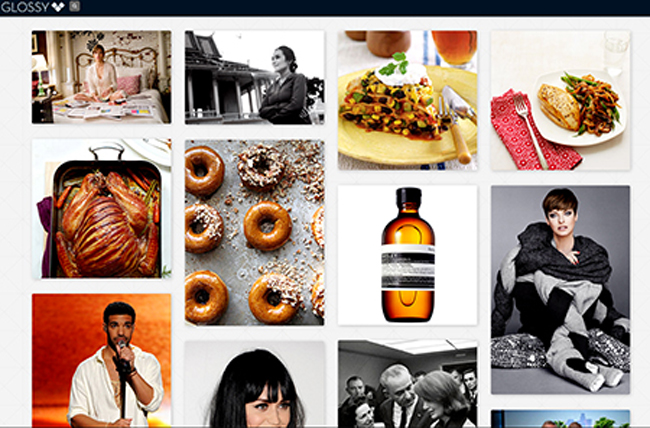
Glossy: A New Way to Read
For most of the last year, a team of four Parsons Design and Technology alumni spent countless hours meticulously crafting the next big breakthrough in the way we find, read, and curate editorial content online. Their careful planning led them to a decision many designers would balk at.
“About a month ago, we recognized that to truly realize this idea of ours, we needed to scrap the original coding platform and build a new one from scratch,” explains David Carroll, CEO and associate professor at Parsons.
Four weeks later, Carroll’s team and fellow co-founders would present the public beta of their editorial app, called glossy, before hundreds of industry leaders and nearly a thousand curious onlookers. Needless to say, sleep hasn’t come in abundance for the designers lately.
At Friday’s NYC Media Lab Annual Summit, hosted by The New School, they launched glossy with some pretty big news: Users of the app would enjoy access not only to a decade’s worth of archives from Hearst Corporation (which owns publications like Elle, Cosmopolitan, and Harper’s Bazaar) but to content from the New York Times’ archives as well.
“Glossy is just the first of many new tech and digital media innovations that are sure to come out of Parsons Design and Technology and The New School,” says Carroll. “We’re ready to start bringing ideas out of the lab and into the marketplace.”
It all started at the second annual NYC Media Lab annual summit in August 2013 as an open seedresearch project with Hearst Corporation. The app was created on the basis of a few key assumptions: that there is currently no place where people are allowed to freely explore editorial content from a wide range of publications; that users increasingly prefer to explore visually, rather than through text lists (hence the explosive popularity of apps like Pinterest and Tumblr); and that through their exploration of available content, users should be able to create a digital pathway of related topics. All in all, it’s a dramatically different way to visualize and consume media—article by article rather than issue by issue.
“Think of this like HBO Go in the entertainment industry or iTunes in the music industry,” says Carroll. “These apps have unbundled their markets, so consumers can purchase a single song off an album to curate their own playlist or subscribe to just one set of channels to curate their own TV guides. Glossy is the curated unbundling of the publishing industry.”
It also features spectacular visuals. The interface is a grid of vibrant images overlaid by the title of the publication and the article’s headline. Click on an image, and a teaser text pops up, along with icons displaying similar content. By clicking on these images, you create your own “trail,” which is saved. The trails are the “keys to the kingdom,” in Carroll’s words.
[ctt tweet=”“Glossy is about finding things you weren’t supposed to find, or never thought to look for in the first place.”” coverup=”vCXaZ”] The app plays with the conventional results of a search engine by starting with general categories. “How do you search if you don’t know what you’re looking for?” asks Carroll. Glossy leads people to an answer and leaves a digital trail.
The launch on Friday wasn’t just a major milestone for Carroll and the rest of his team; it was also the first start-up story to come from NYC Media Lab, a new organization whose mission is to connect a robust network of university talent with the buzzing infrastructure of tech and media companies in New York City.
“Glossy is a company that could only have been founded in New York City, using a methodology characteristic of Parsons and The New School,” says Carroll. He cites advantages to Parsons’ design-led methods versus Silicon Valley’s often engineering-based approach to coding software. It’s a completely different style, he says, and one that is highly socially conscious and consumer facing.
“Glossy is just the first of many new tech and digital media innovations that are sure to come out of Parsons Design and Technology and The New School,” says Carroll. “We’re ready to start bringing ideas out of the lab and into the marketplace.”
The app is a testament to the fact that students need not go to an engineering school to produce the kind of robust apps and products the industry is clamoring for.
Learn more about The New School’s involvement with NYC Media Lab here.